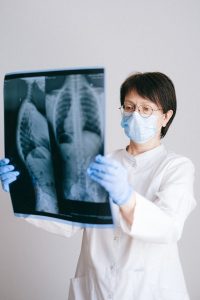How Radiography Became Important in Dentistry
The use of radiography in dentistry has been essential for a long time. Dentists can see and evaluate oral conditions that are not easily detectable without the use of this imaging technology. Over time, radiography has transformed a lot and now uses digital imaging techniques instead of film. In this article, we will delve into the evolution of radiography in dentistry, exploring the benefits, advancements, and improved patient care associated with this transformation.
Traditional Film Radiography: The Foundation of Dental Imaging
The foundation of dental imaging for many years was traditional film radiography, which is also known as analog radiography. This technique involved placing X-ray films in the patient’s mouth and capturing images using X-ray machines. Afterwards, the films were processed in a darkroom, producing pictures that helped dentists identify dental problems.
Even though film radiography was groundbreaking, it had its downsides. Manual processing was necessary for the films, but it was slow and mistakes were common. In addition, the photos produced were not simple to transfer or store digitally, causing difficulties in sharing patient information and collaborating with other healthcare professionals.
Digital Radiography: Revolutionizing Dental Diagnostic Tools
Digital radiography transformed dental imaging by replacing traditional films with electronic sensors. These sensors captured X-ray images directly into a computer. With this shift, manual film processing became unnecessary and dentists could immediately view high-quality digital images.
Traditional film radiography has some limitations, but digital radiography solves these problems. To begin with, it helps lower the level of radiation patients receive since the sensors are more sensitive and need less radiation to generate images. Also, dentists can view the images immediately on a computer screen, which helps them to see them bigger and make improvements. Furthermore,digital images are easily storable,copyable,and transmittable online. this improves team-corperation as well as keeps track of patient records.

Positive aspects of employing digital imaging techniques in dentistry
Digital imaging in dentistry offers several advantages that make the overall patient experience and diagnostic capabilities better. A great advantage is the capability to modify the contrast and brightness of the pictures digitally, which helps in finding minor issues with teeth. Moreover, the instant availability of digital images allows for immediate chairside discussions with patients, facilitating better communication and treatment planning.
By using digital imaging, dentists can superimpose old images onto current ones and observe any changes in dental conditions. This long-term perspective helps dentists understand how diseases develop and allows them to create treatment plans based on that.
Using modern radiography techniques to enhance patient care
Dentistry benefits from modern radiography techniques like cone beam computed tomography (CBCT), which further improve patient care. With CBCT, dentists can see the teeth, bones, and tissues from all different angles. This cool way of taking pictures helps dentists plan where to put dental implants, treat crooked teeth, and figure out difficult dental problems.
Digital techniques are better for the environment since dental practices no longer require chemicals or have to dispose of film.
Conclusion
Traditional film used to be used for in dentistry, but now there is digital imaging. This advancement has completely changed how dental issues are diagnosed. There are several benefits to using digital radiography, like less radiation exposure, instant access to great pictures, better ways to store and share them, and improved communication with patients. New radiography methods like CBCT have improved dental care by giving clear 3D images for accurate treatment planning. As a result of these developments, dental practitioners can now deliver more accurate assessments, custom treatment approaches, and better overall support for their patients. Radiography in dentistry has evolved to ensure that patients receive top-quality oral healthcare, showcasing the continuous improvements made in the field.




